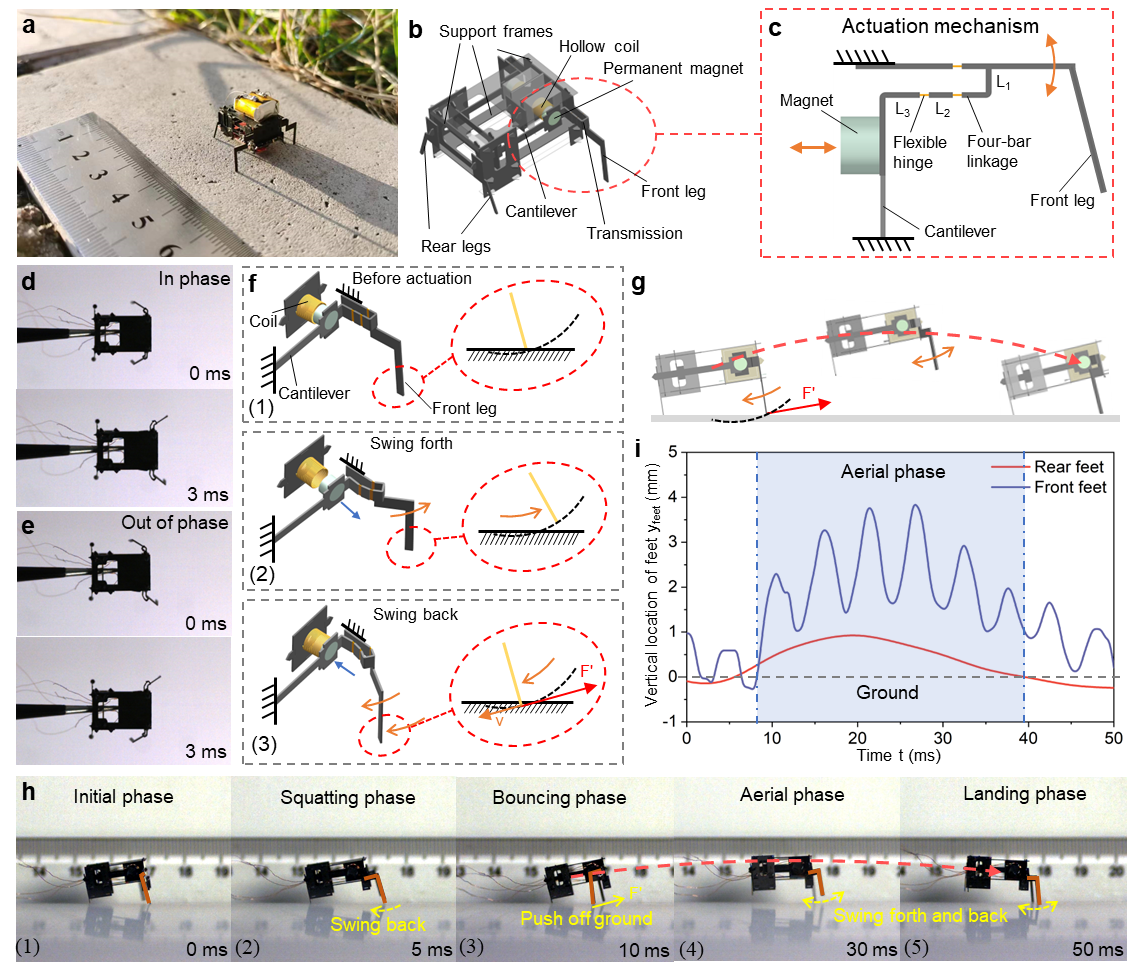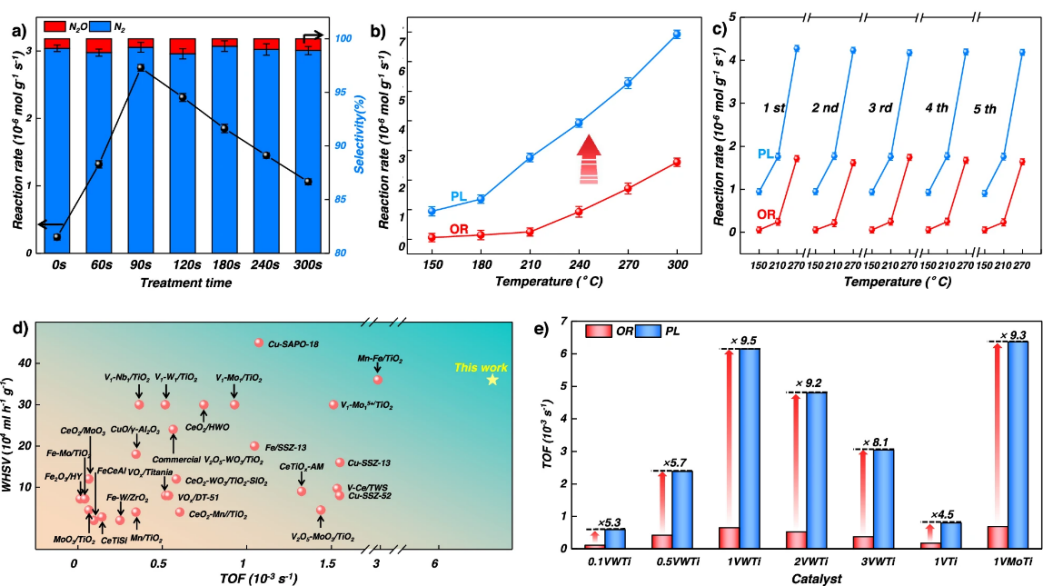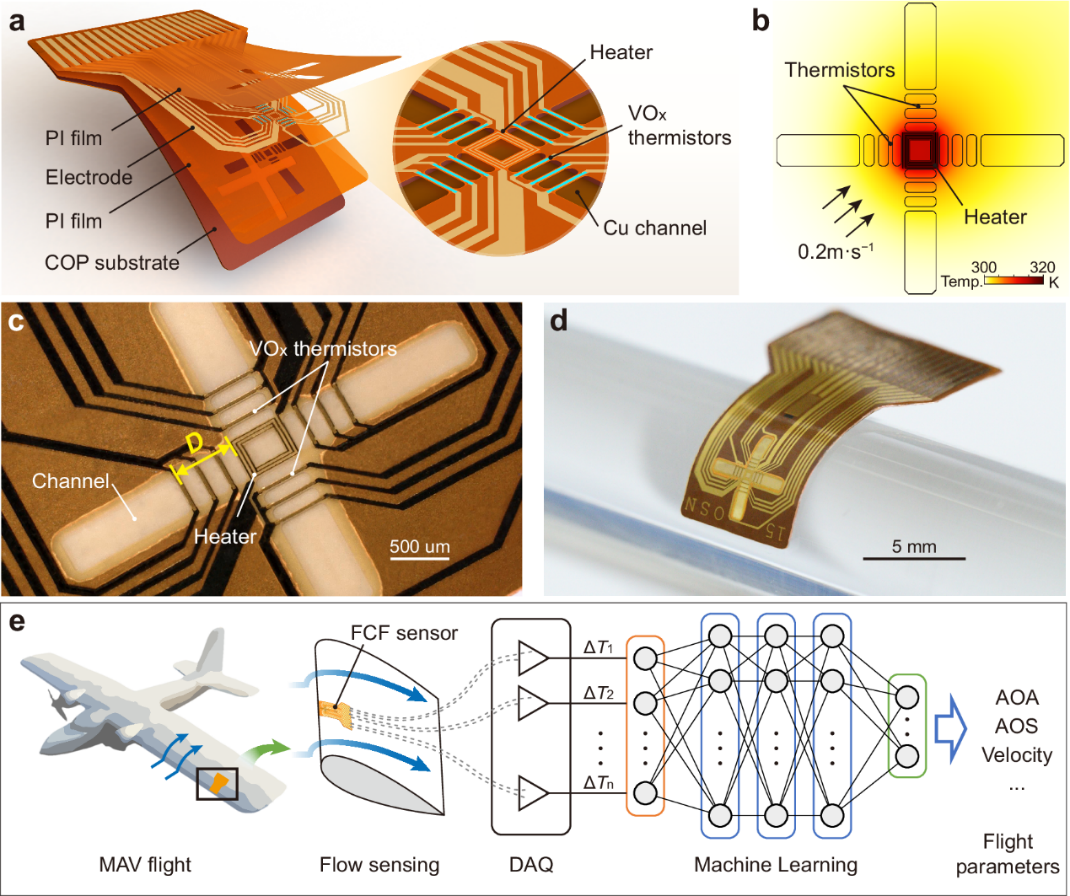Recently, six articles from Beihang’s research teams have been published in Nature’s sub-journals.
On May 8, Nature Communications published an article entitled “A Wireless Controlled Robotic Insect with Ultrafast Untethered Running Speeds” by Professor Yan Xiaojun’s teamfrom the School of Energy and Power Engineering. The authors invented a micro-power system for insect-scale robots, and developed the BHMbot, Beihang Microrobot (2-cm-long, 1760 mg) with high untethered locomotion performance based on this system. This result has a wide range of applications in the fields of post-disaster rescue, large-scale machinery and equipmentmaintenance, and information acquisition. Professor Liu Zhiwei and doctoral student Zhan Wencheng from Beihang University School of Energy and Power Engineering are co-first authors; Beihang Professor Yan Xiaojun and Tsinghua University School of Integrated Circuits Associate Professor Wu Xiaoming are co-corresponding authors.

Structural design and moving mechanism of the BHMbot
On May 2, Professor Zhao Weisheng’s team from the Hangzhou International Innovation Institute of Beihang University published an article titled “Universal scaling law for chiral antiferromagnetism” in Nature Communications. The researchers found two distinctive anomalous Hall effect (AHE) contributions in the chiral AFM Mn3Pt, originating from a time-reversal symmetry breaking induced intrinsic mechanism and a skew scattering induced topological AHE due to an out-of-plane spin canting with respect to the Kagome plane. The work proposed that the scaling law can explain the anomalous Hall effect in various chiral magnets and has far-reaching implications for chiral-based spintronics devices. Xu Shijie, a Beihang postdoctoral fellow, Jiang Yuhao, a Beihang doctoral student, and Dai Bingqian and Tai Lixuan, two doctoral students from the University of California, Los Angeles, are co-first authors. Professor Zhao Weisheng of Beihang University is the only corresponding author of the paper.

Structure of Mn3Pt film
On May 1, Nature Reviews Clinical Oncology published an article entitled “NIR-II light in clinical oncology: opportunities and challenges” by Associate Professor Zhang Zeyu, Professor Tian Jie, Researcher Hu Zhenhua and more than ten other collaborators. The article systematically reviewed the representative progress of NIR-II light in clinical tumor treatment, indicated its impressive potential to decrease cancer recurrence, reduce complications and prolong survival, and put forward the feasible strategies to accelerate the translation of technical advances into clinical benefits, providing a good reference for doctors, researchers, engineers and technicians in the field of clinical oncology to understand the current status and trend of the development of NIR-II techniques. Associate Professor Zhang Zeyu from the School of Medical Science and Engineering of Beihang University, Researcher Du Yang and Assistant Researcher Shi Xiaojing from Key Laboratory of Molecular Imaging of Chinese Academy of Sciences are the co-first authors. Professor Tian Jie, Researcher Hu Zhenhua, Professor Dong Jiahong, Professor Wang Jun, and Professor Ji Jiafu are the corresponding authors.

Fundamental principles and applications of NIR-II imaging and phototherapy
On April 27, Associate Professor Li Xiang’s team from the School of Energy and Power Engineering of Beihang University and collaborators made important progress in the field of continuous emissions pollutant control. The research results titled “Plasma-assisted manipulation of vanadia nanoclusters for efficient selective catalytic reduction of NOx” was published online in Nature Communications. This study presented a plasma-assisted treatment strategy to achieve supported metal oxide nanoclusters from a rapid transformation of monomeric dispersed metal oxides, improved denitrification efficiency by more than tenfold, and discovered a new reaction pathway for adsorption of bridged nitrate involved in ammonia activation. Yin Yong, a doctoral student at Beihang University, and Luo Bingcheng, Professor at China Agricultural University, are co-first authors of the paper. Li Xiang, Associate professor at Beihang University, Zhu Minghui, Professor at East China University of Science and Technology, and Israel E. Wachs, Professor at Lehigh University, are co-corresponding authors.

Catalytic performance of PL and OR catalyst in the NH3-SCR
On April 17, Professor Wang Guangsheng’s team from the School of Chemistry of Beihang University proposed an interface-induced dual-pinning mechanism which could improve the absorption of electromagnetic waves at low-frequency bands. The research results titled “Interface-induced dual-pinning mechanism enhances low-frequency electromagnetic wave loss” was published online in Nature Communications. The establishment of the dual-pinning effect resulted in optimized impedance and enhanced attenuation at low-frequency bands, leading to better EMWA performance. This work proposed a mechanism to optimize low-frequency impedance matching with electromagnetic wave (EMW) loss and paved an avenue for the research of high-performance low-frequency absorbers. Cai Bo,a doctoral student at the School of Chemistry of Beihang University, is the first author. Professor Wang Guangsheng from the School of Chemistry, Professor Liu Limin from the School of Physics, and Associate Researcher Hu Pengfei from the Research Institute of Aero-Engine of Beihang University are the co-corresponding authors.

Schematic and experimental proof of the magnetic pinning mechanism
On April 10, Nature Communications published an online article titled “Flexible calorimetric flow sensor with unprecedented sensitivity and directional resolution for multiple flight parameter detection” by Prof. Jiang Yonggang’s team from the School of Mechanical Engineering and Automation of Beihang University. The study presented a single flexible calorimetric flow sensor, which broadened the application of flow field sensing in attitude detection, airspeed estimation, and flight safety monitoring of micro-small UAVs, and provided innovative design ideas and development prospects for flight parameter measurement of UAVs. Gong Zheng, a doctoral student of Beihang University, is the first author, and Professor Jiang Yonggang is the corresponding author.

Flexible calorimetric flow sensor design
Reviewed by: Li Jianwei
Edited by: Jia Aiping
Translated by: Hu Xueyang

